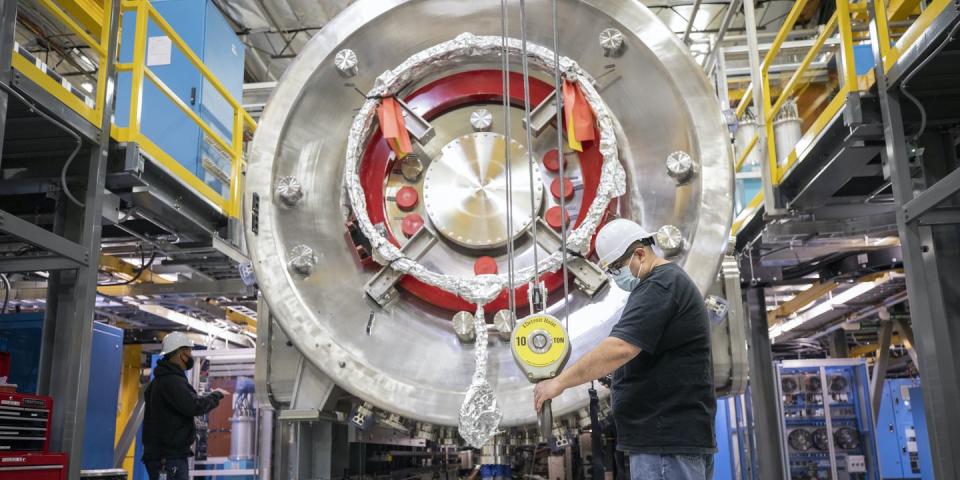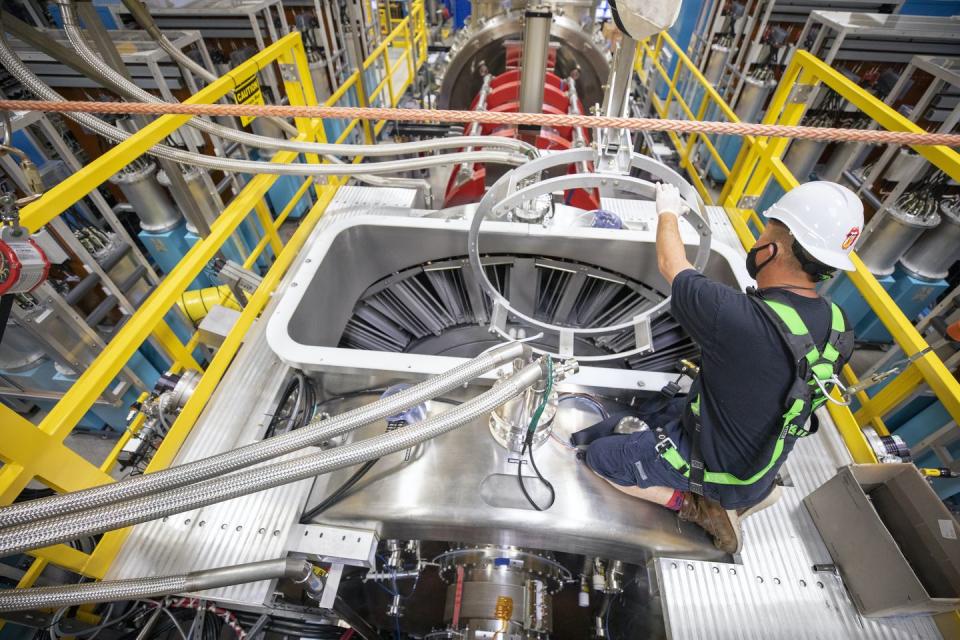This Nuclear Fusion Reactor Must Run 8 Times Hotter Than the World’s Largest Tokamak

TAE Technologies wants to produce fusion energy using hydrogen and boron.
Its reactor is linear, not circular, and uses a hybrid particle accelerator approach.
No nuclear fusion reactor has demonstrated net energy gains at this point.
A nuclear fusion startup in California called TAE Technologies made headlines last month by raising $250 million in funding from huge companies like Chevron and Google. The company says its approach to fusion is different from the popular conception, and that it can bring an alternative commercial nuclear fusion power plant to the market by the 2030s.
To understand what makes TAE’s approach to nuclear fusion distinct, we spoke to Michl Binderbauer, a plasma physicist and the firm’s CEO.
How Nuclear Fusion Reactors Work
Nuclear fusion is a blanket term that covers any reaction where, literally, the nucleuses of two different atoms are fused. It’s that simple. That’s as opposed to nuclear fission, where one nucleus is split into two. Nuclear fusion is typically conducted on lighter elements that have lower atomic numbers (the number of protons in the nucleus), while nuclear fission is conducted on heavier elements with much higher atomic numbers.
In both fission and fusion, it’s important to choose the right elements. In fusion, that’s because elements over a certain atomic size may still fuse, but they won’t produce the plentiful energy we associate with the promises of the nuclear fusion industry. In fact, most fusion projects focus on the absolute lightest elements: hydrogen and helium. ITER—the massive, proof-of-concept nuclear fusion reactor being built over the next ten years in the south of France—uses the hydrogen isotopes deuterium and tritium. The names mean exactly what you may be thinking: deuter-ium has an atomic mass of two, while tri-tium is three.
ITER also represents the most typical fusion reactor at this point, which is the tokamak; this is a donut-shaped canister where extremely powerful magnets control a swirling plasma that reaches many millions of degrees in temperature. The plasma is where the fusion reactions occur, releasing energy that scientists can gather and turn into electricity, ideally. The deuterium and tritium fuel model is also common, but tritium is extremely rare and must be specially created from lithium for ITER.
All of that could be forgiven with a proof-of-concept for fusion energy, but so far, no fusion reactor has come even close to generating more energy than the huge amount required to get the machine online and fire it up to millions of degrees in temperature. The ones that have come the very closest—which is still not close at all—have shut back off after a tiny amount of time. The world has been watching the many nuclear fusion tokamak experiments with keen interest, but the stage is also set for those who are trying something a bit different, like stellarators and other reactor formats.
New Fuel, New Form

That’s where TAE Technologies comes in. Its fusion reactor uses a different fuel combination, and the reactor itself is a totally different form factor from tokamaks or stellarators. (A tokamak uses a current to control the sun-hot plasma in a reactor, while a stellarator does not). TAE’s machine is a linear reactor that is completely non-radioactive because it uses hydrogen and boron: two abundant, naturally-occurring elements that react to produce only helium. ITER, by comparison, will produce helium and also free neutrons that will literally radiate into the surrounding materials. Because of this, TAE’s approach is known as aneutronic fusion.
TAE uses “a proprietary combination of plasma physics and accelerator physics in a linear shape,” CEO Binderbauer tells Popular Mechanics via email. And the size of the footprint is dramatically different. “Our current fifth-generation device, Norman, is 24 meters long with a vacuum vessel measuring about 4 meters long and less than 2 meters in diameter. Our next machine, Copernicus, will be about 50 percent bigger than Norman and will fit within a 2-acre footprint. By contrast, the ITER site measures over 100 acres with the ITER tokamak vacuum vessel being almost 20 meters in diameter and 11.5 meters tall.”
Naturally, there’s a catch. “One of the biggest challenges with hydrogen-boron is the temperature required for fusion to occur, which is on the order of one billion degrees [Celsius],” Binderbauer says. (ITER requires “only” a temperature of 150 million degrees Celsius, by comparison.) “However, CERN’s Large Hadron Collider has reached over five trillion degrees [Celsius] for non-fusion applications, so these conditions are within reach.” For context, the hottest part of the sun is its core, which can run as hot as 15 million degrees Celsius, according to NASA.
As with many other nuclear fusion energy projects, the next ten years will be critical for TAE. And it helps that the company has enormous investments on its side from some of the biggest players on the planet. At the same time, we’re still waiting to achieve net energy from any fusion reactor—let alone the one that must reach temperatures nearly eight times higher than ITER.
“Even billion-degree temperatures do not mean useful power,” anti-fusion journalist Steven B. Krivit tells Popular Mechanics by email. “You need the right temperature, confinement time, plasma density, and most important, overall reactor net power.”
Some of these pieces are still missing from every nuclear fusion reactor in the world, but they could still fall into place over time.
You Might Also Like
